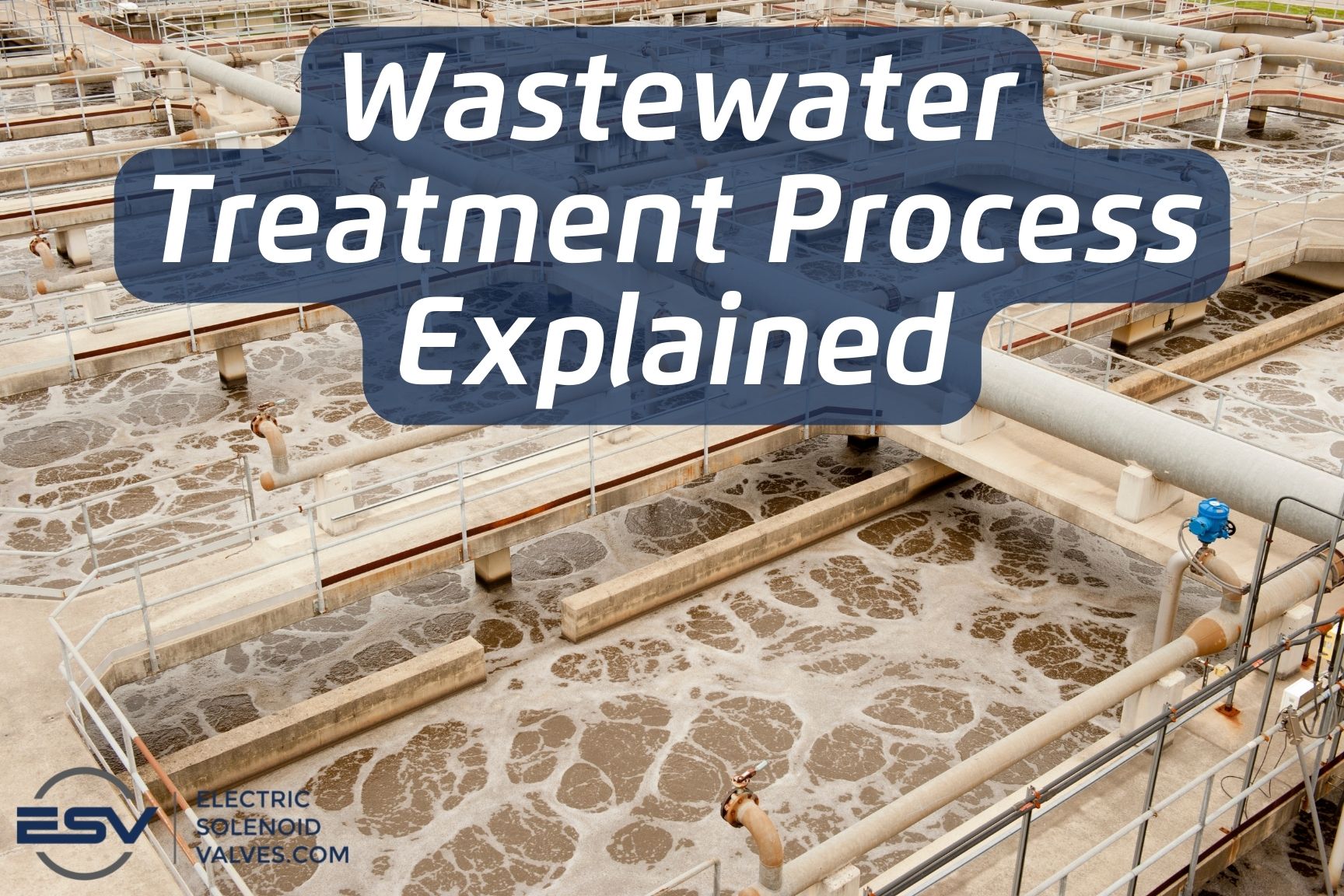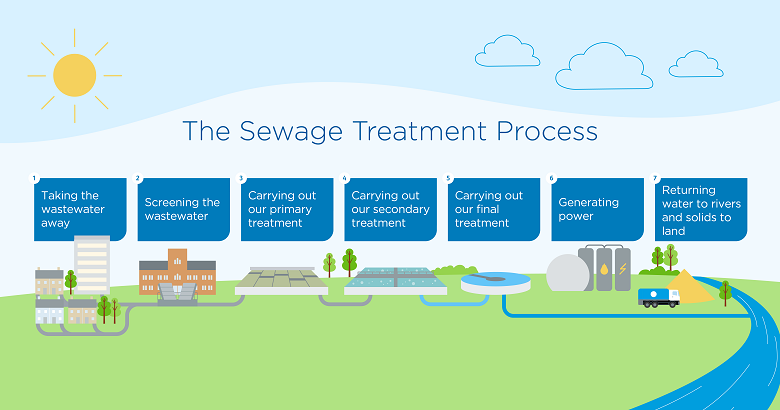Comprehensive Overview to Industrial Waste Water Treatment Procedures
Comprehensive Overview to Industrial Waste Water Treatment Procedures
Blog Article
Strategic Approaches to Enhance Waste Water Therapy Performance and Lessen Environmental Effect
In the realm of drainage therapy, the pursuit for boosted efficiency and lowered ecological influence is a perpetual difficulty that requires critical remedies. As culture grapples with the imperative to take care of water resources sustainably, a nuanced technique ends up being important. The integration of innovative therapy technologies, energy-efficient processes, resource recuperation approaches, improved nutrient removal methods, and wise monitoring and control systems represents a diverse framework for dealing with these pressing worries. What exists at the core of this complicated web of techniques is the prospective to transform the way we come close to waste water treatment, not simply as a procedure of disposal, however as an important chance for advancement and ecological stewardship.
Advanced Therapy Technologies
Advanced membrane layer purification systems have actually changed innovative wastewater treatment procedures, substantially improving the removal of impurities. These innovative systems operate by requiring water with a semi-permeable membrane layer, successfully separating contaminations from the water stream. The membrane layer's microscopic pores catch pollutants such as microorganisms, viruses, and put on hold solids, allowing just cleansed water to pass through. This modern technology has proven to be extremely effective in removing a variety of contaminants, consisting of drugs, hefty steels, and natural substances, which are frequently testing to eliminate via traditional treatment techniques.
In addition, membrane layer filtering systems provide many advantages over standard therapy approaches. They call for less space, produce higher-quality effluent, and are much more resistant to variations in influent water quality. In addition, these systems are very versatile and can be conveniently incorporated into existing treatment plants or utilized as standalone systems for decentralized applications. As the need for tidy water remains to climb, the fostering of advanced membrane layer filtration modern technologies is important to guarantee reliable and sustainable wastewater therapy techniques.
Energy-Efficient Processes
The combination of energy-efficient processes in wastewater treatment systems is critical for maximizing resource usage and decreasing operational prices. By implementing energy-efficient innovations, therapy plants can dramatically decrease their carbon footprint and overall ecological influence. One crucial method to improving power effectiveness in wastewater treatment is the application of sophisticated aeration systems, such as great bubble diffusers or surface aerators, which can boost oxygen transfer performance and reduce power intake. Furthermore, incorporating power recuperation systems, like anaerobic digestion for biogas production or making use of excess heat for thermal procedures, can help counter power needs and promote sustainability.
Moreover, maximizing process control and automation with the use of innovative sensing units and monitoring systems can improve general energy effectiveness by adjusting operations in real-time based upon real need and conditions. Executing energy audits and consistently monitoring energy performance signs are vital practices to identify locations for improvement and track energy-saving initiatives efficiently. On the whole, the fostering of energy-efficient procedures in wastewater treatment not just profits the atmosphere however additionally contributes to long-lasting price financial savings and functional sustainability.
Source Recuperation Approaches
With a concentrate on maximizing source use and sustainability in wastewater treatment systems, the implementation of source recuperation approaches arises as a pivotal element in enhancing functional efficiency. Resource recuperation methods in wastewater treatment involve the recognition and extraction of valuable sources from the check here waste stream, thus transforming what was when thought about waste into a valuable asset. By applying source recuperation techniques such as nutrient removal and healing, energy generation from natural matter, and the production of recyclable water, wastewater therapy plants can lessen ecological influence while optimizing efficiency.

Improved Nutrient Elimination Methods
Applying advanced nutrient elimination strategies is crucial for optimizing the effectiveness of wastewater treatment systems. One of the vital methods utilized for enhanced nutrient removal is the procedure of biological nutrient removal (BNR), which entails the removal of nitrogen and phosphorus with organic processes.

Along with BNR, advanced therapy techniques such as membrane bioreactors (MBRs) and constructed marshes can also be utilized to boost nutrient elimination effectiveness. MBRs use membranes to achieve high-quality effluent standards by successfully removing nutrients and suspended solids. Built marshes imitate all-natural marsh procedures to eliminate nutrients through plant uptake, microbial activity, and sedimentation. By incorporating these sophisticated nutrient elimination methods into wastewater therapy towns, industries and systems can efficiently lower nutrient air pollution and shield the atmosphere.
Smart Tracking and Control Systems
Making use of cutting-edge technology, the assimilation of clever monitoring and control systems transforms the operational effectiveness of wastewater therapy centers. These systems incorporate innovative sensing units and data analytics to continually keep an eye on essential parameters such as pH degrees, turbidity, liquified oxygen, and flow rates in go real-time. By gathering and evaluating this information, drivers can gain beneficial understandings into the efficiency of the therapy processes, allowing aggressive modifications to maximize therapy performance.
Smart tracking and control systems also support remote surveillance capacities, permitting operators to access real-time information and control features from off-site places. This remote ease of access improves functional flexibility and responsiveness, allowing swift treatments in instance of system malfunctions or variations in influent high quality. Additionally, the anticipating maintenance capabilities of these systems aid avoid tools failings and lessen downtime, inevitably improving the general reliability of wastewater therapy operations (Waste Water Treatment).
Verdict
In final thought, critical approaches such as sophisticated therapy innovations, energy-efficient procedures, resource recuperation strategies, improved nutrient elimination strategies, and wise surveillance and control systems play a vital duty in enhancing wastewater therapy performance and minimizing ecological impact. By carrying out these strategies, wastewater therapy plants can enhance their total efficiency, lower power usage, recoup important sources, and make certain conformity with environmental policies. These strategies are crucial for reliable and lasting wastewater administration practices.

In verdict, calculated methods such as innovative treatment modern technologies, energy-efficient processes, source recovery methods, improved nutrient removal techniques, and wise surveillance and control systems play a crucial function in improving wastewater therapy efficiency and lessening ecological impact.
Report this page